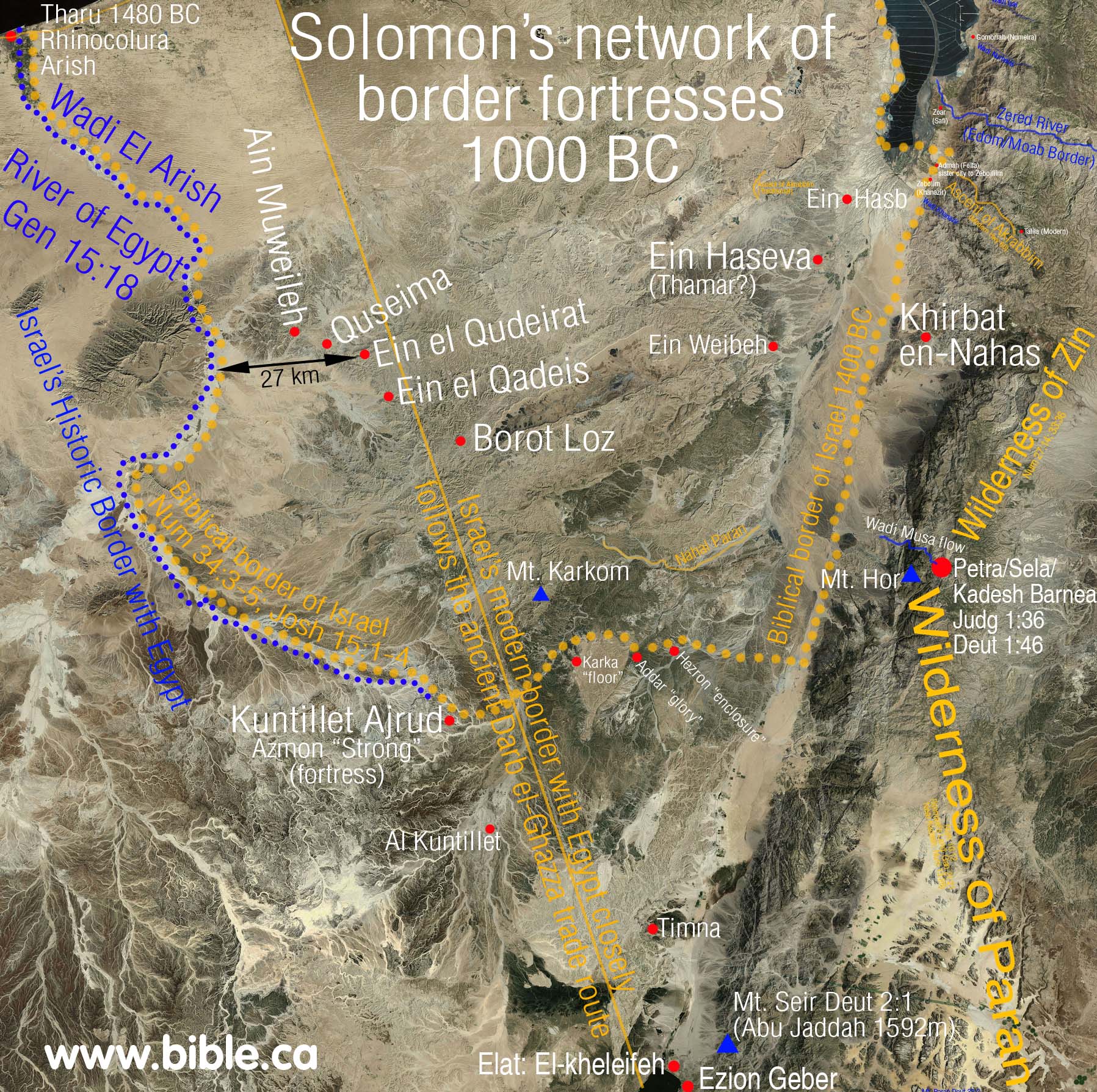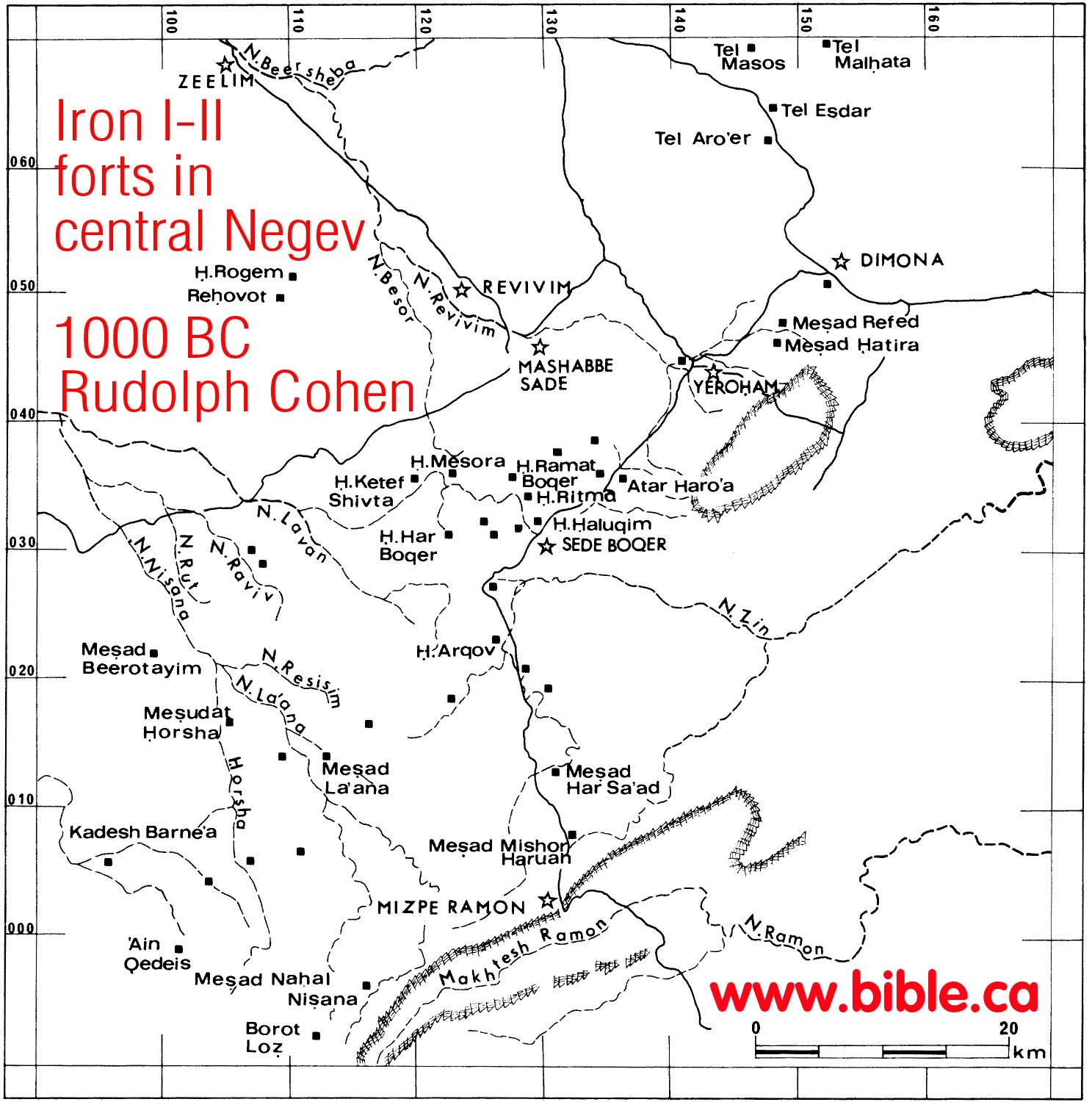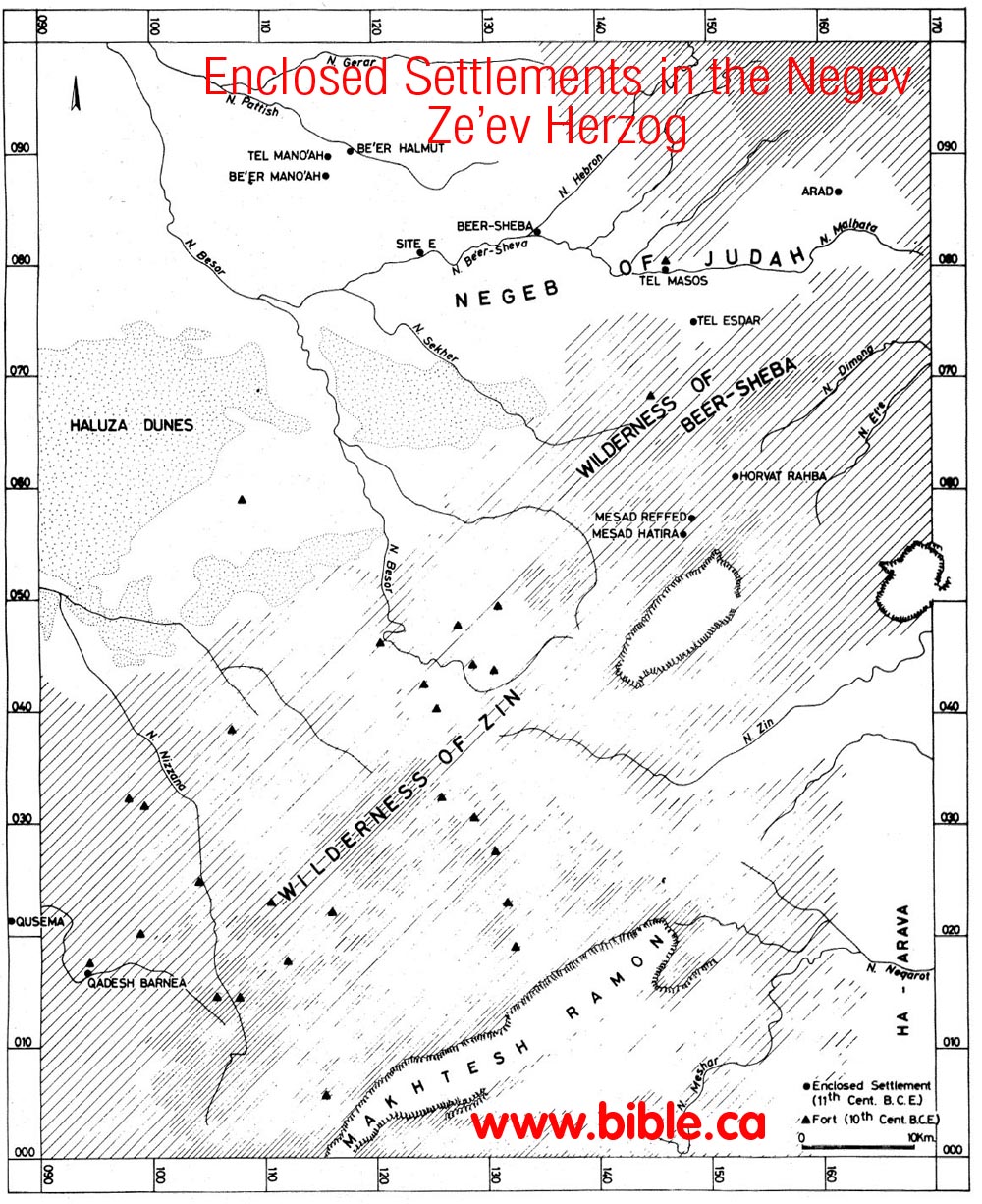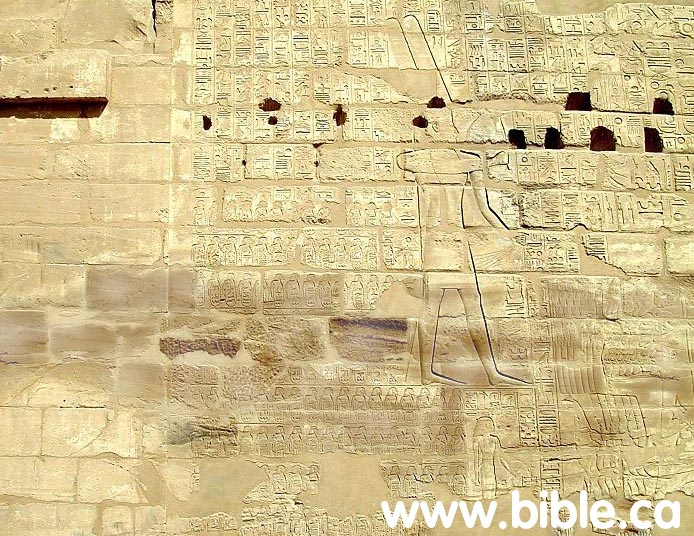Introduction document: Solomon's network of military border fortresses
Solomon's network of military border fortresses in the Negev
|
|
|||
|
Introduction document: Solomon's network of military border fortresses |
|||
|
|
|||
Introduction:
A. Bible verses that indicate fortresses: "Strong holds"
B. Locations of the 50 fortresses:



C. Dating the fortress network: The opinion of archeologists
|
Earliest |
Middle |
Latest |
|
|
Cohen: 1981 (Excavations At Kadesh-Barnea: 1976-1978, Ein el-Qudeirat, Rudolph Cohen, 1981 AD) |
Oval fortress built by Solomon and destroyed by Pharaoh Shishak's invasion of Palestine in about 920BC (1 Ki 14:25-26) |
Rectangular fortress built by Uzziah of Judah 784-733 BC |
Rectangular fortress rebuilt by Josiah, King of Judah 640-609BC. Josiah also rebuilt Solomon's Ezion-Geber sea port. Destroyed by Babylon in 586 BC |
|
Dothan: 1965 (The Fortress at Kadesh-Barnea, M Dothan) |
pre-fortress settlements 950 BC |
single fortress Rectangular fortress built by Jehoshaphat 870-846 BC and destroyed by Babylon in 586 BC. |
No fortress, but Persian era (post Babylonian) settlements. |
|
Herzog: 1983 (Enclosed Settlements in the Negeb, Ze'ev Herzog) |
Fortresses near Beersheba built by David. Fortresses in Negev built by Solomon to protect trade routes to the Red Sea and Ezion-Geber. |
||
|
Meshel: 1994 (The "Aharoni Fortress"), Zeev Meshel) |
Meshel, while uncommitted, sees nothing that prevents the fortresses being dated at the time of Solomon: 950 BC. He also believes the fortresses were the result of a central initiative from the outside (ie Solomon). He also rejects the view that desert nomads transitioned from nomadism to sedentarization (settling down in one place). He openly rejects the views of Ussishkin. |
||
|
Rothenberg: 1969 (Timna, Beno Rothenberg) |
Built by Amalekites in 1300 BC. |
Destroyed by King Hezekiah: 1 Chronicles 4:42-43 |
|
|
Aharoni: 1976 |
Built by Saul 1025 BC to guard against Amalekites |
Destroyed by destroyed by Pharaoh Shishak in 925 BC. |
|
|
Ussishkin: 1995 (The Rectangular Fortress at Kadesh Barnea, David Ussishkin) |
Oval structure (not a fortress) for agricultural (sedentary) settlement. no date given but was before rectangular fortress |
Single rectangular fortress probably built by Uzziah 784-733 BC or another king and destroyed by Babylon in 586 BC |
|
D. Solomon built the fortress network in 950 BC
E. Fortresses shaped according to local topography for security:
F. Fortresses built for military personnel not families:
G. Fortresses all built at a single period of brief occupation:
I. No fortresses found from Qudeirat to Ezion Geber:
J. Negev ware pottery found at fortresses is unique
Detailed discussion of the Pottery of the Bible
K. Fortresses destroyed by Shishak in 924 BC

By Steve Rudd: Contact the author for comments, input or corrections.